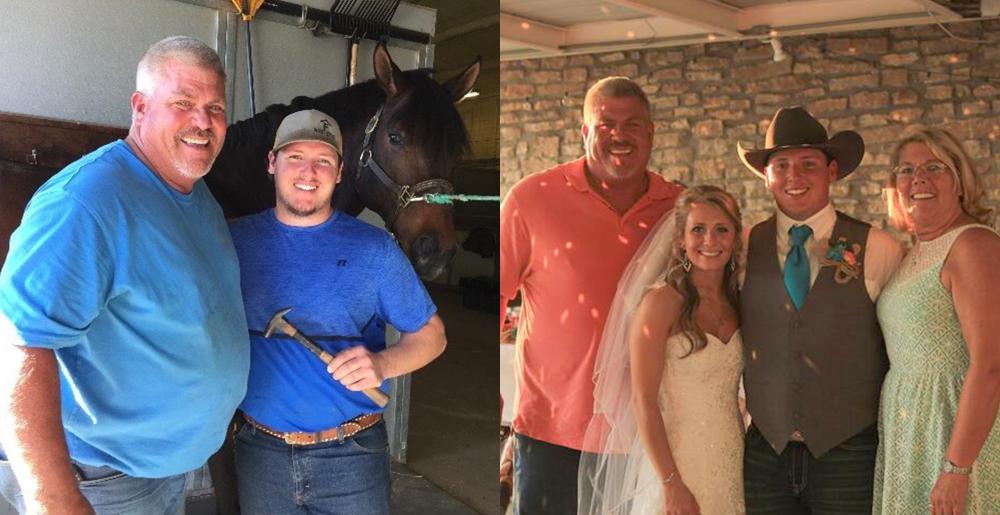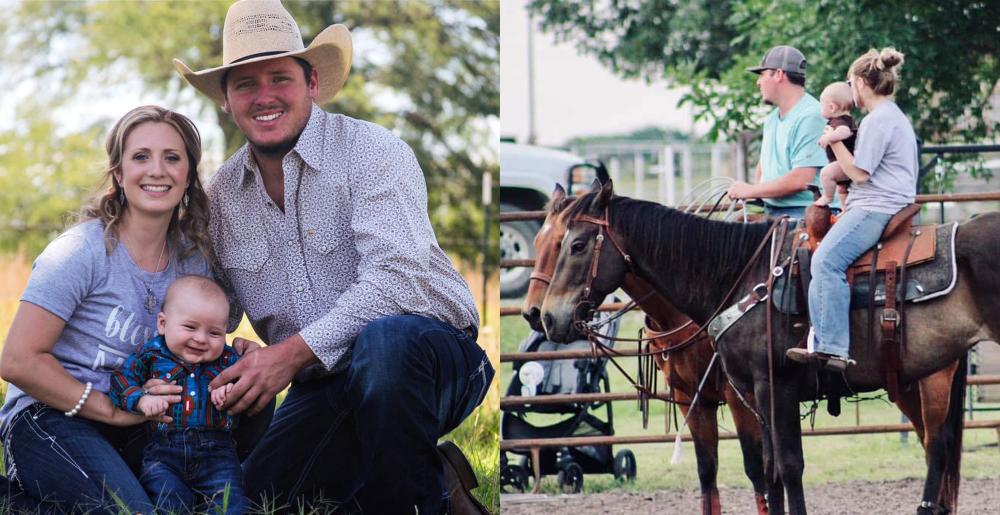
Logan Fales
“I see success as keeping horse owners happy, keeping horses sound, and taking care of my family.” Logan Fales shows you can go from apprentice to entrepreneur without getting kicked in the head.
“You have no bad habits.”
After attending the Texas Horseshoeing School in Scurry, Texas, Logan Fales returned to his native Georgia where he worked with the late farrier, Starling Mercer. The problem was, he’d always wanted to live in the Texas/Oklahoma area. It was an epicenter of roping, which was a huge draw for Logan, who had roped since he was a boy. Plus, his heart was already connected to Texas, since he had recently met Sara there, the woman who would become his future wife.
So, Logan made the move to Texas, doing some part-time work at the time for Bear Reed, who gifted him with the knowledge that long-time farrier, Lonnie Miller, was in the market for a full-time apprentice, a rare opening for a smart, up-and-coming farrier like Logan.
The opportunity would be critical for Logan if the young apprentice could snag a spot for himself. While Lonnie may have been searching for an apprentice, he was looking for someone with a certain set of qualities, and those characteristics didn’t have much to do with horseshoeing.

In their first call in November of 2014, Lonnie explained that his practice focused on English disciplines. Logan quickly admitted that he had little to no experience with English horses and wondered if that lack of experience would ruin the deal.
Lonnie simply said, “Good. You have no bad habits.” But, Logan didn’t have the job just yet.
In a trial run, the two decided to ride together for a few weeks, just to see how it worked out— to see if the relationship could progress to a broader mentor/apprenticeship model. Unbeknownst to both of them, that trial run would begin a five-and-a-half-year apprenticeship and a relationship that would feel more like father and son than boss and employee.
I learned more from Lonnie in the first two weeks than I’d learned in the past year.
For his part, Lonnie admits that the impression Logan made on that very first call had already gone a long way to convince him that they were going to be a good team. Specifically, he noticed Logan’s old-school manners. “He always took his hat off and shook the client’s hand. He always told clients it was a pleasure to meet them.”
And for Logan, those few weeks with Lonnie were both inspiring and character defining. “I learned more from Lonnie in the first two weeks than I’d learned in the past year.”
“The most important thing was, stay out of the horses’ way. Support the horse, but don’t overdo it. Don’t try to make the horse something he’s not.”

Making the shift from apprentice to entrepreneur
The value of mentorships is in the passing of knowledge between generations, educating apprentices on both horseshoeing and business skills honed over decades of practice. But good apprenticeships perform another important function: they transition young farriers from schooling to solo practice.
The time Logan spent with Lonnie shows how this can work. Lonnie explained, “I told Logan what I tell every apprentice I take on, “You’ll make a little less money early on. But I’ll teach you every aspect of being a farrier. I'm going to teach you your books, how to deal with customers, and about the horseshoeing business itself. When you finish being my apprentice, you will have a full-time practice that can support your family.”
He was right. At first, Logan worked Monday through Friday with Lonnie. By the end of the five and half years, he was working only one day a week with him—and had a thriving business of his own. And just as Logan completed the transition from apprentice to full-time farrier, Lonnie had a parting gift, Lonnie’s very first driving hammer that he’d bought back in 1970.
I wanted to make sure that I gave him the foundation for success. But it's like I told him– I said, I will give you every tool so you can be successful. And I said, I will always be here.
It was a great experience. Now, Logan, who comes from Waycross, Georgia, says, “I consider Lonnie and his wife, Miss Nancy, my Texas parents,” a feeling that is unquestionably returned. Echoing Logan, Lonnie says, “I love the boy. I truly mean I love him like a son. I really do.”
Of course, starting and running his own business was still a challenge, especially with a newborn son. Besides sharpening his skills with Lonnie, Logan had to make some tricky decisions about the workload for his budding business. “Everybody has their own way of calculating how much they need to do. Some measure that in horses, and some in terms of client numbers. I base it on revenue, because what you need to do for each horse varies. I also take into account people’s circumstances. Most farriers do.”
Now, Logan has come full circle, working with his own apprentice and passing on the timeless values Lonnie instilled in him to the next generation.

Q&A with Logan Fales
At just 29, Logan Fales has already established a thriving practice in Burneyville, Oklahoma after a five-year apprenticeship with Lonnie Miller. We sat down to ask Logan more about his journey and his business. Here’s what he had to say:
Describe your first day at horseshoeing school.
“As a competitive roper, I’d dealt with horses my entire life. But I’d never shod one. So I was a nervous wreck. I mean, everybody’s worst fear is, ‘I might cripple a horse.’ And no one wants to do that. But horseshoeing school is where you can make mistakes. And in that six-week period, you get comfortable. You’re not knowledgeable yet, but you’re comfortable.”
What advice do you have for young farriers?
“Have somebody you can call. In my case, that’s Lonnie. And make sure they have somebody they can call. In Lonnie’s case, that’s his mentor, Jerry Matthews.”
What’s the best advice you’ve been given?
Lonnie encouraged me to keep improving my skills, so I could give my best to every horse and increase my rates over time.
Can you tell us about a particular case you’re proud of?
“My horse Chester is resourceful and managed to get fat in the middle of a drought. I had to start riding him to get ready to rope on him through the winter. When I kicked him into a trot, something felt off. Sure enough, he was starting to rotate. I’d just run out of 3D pads. So, I put Chester in a regular shoe with a regular leather pad to give him some immediate comfort and to keep him off the dirt. Then I got 3d pads from the local supply store and the Comfort Mix Hoof Cushion SuperSoft dental impression material. Chester has been in that combination since then. When we first x-rayed him, he was in a 5 or 6-degree rotation. In his last scan, he was completely back to normal.”

“I like Mustad LiBeros for English horses, because of the width, especially the toe width, and the nail pitch.”
“Delta TS7s and TS8s without clips are my go-to for thinner hoof walls and smaller horses.”
“I started using Delta City Head 4.5 and Delta City Head 5 Slim Blade with Lonnie, and I love the way they drive.”
“Endura-Coated Mustad Combo 5 Slim Nails are especially good for hard feet. They’re easy to drive, so you can slip them higher up.”
“I have about seventy-five Heller eXceL Legend rasps in my truck. Ever since I tried one at a horse show, I’ve loved them, even though the blues are more popular in this area. They just feel great.”

On a Saturday morning, where will we find you?
Either with my wife, Sara, and my son, or roping. I also have some colts I’m riding. I don’t know if that’s unwinding, but it’s always fun.
Logan believes that when farriers talk about the craft and connect, everybody improves. You can find him on Facebook.



